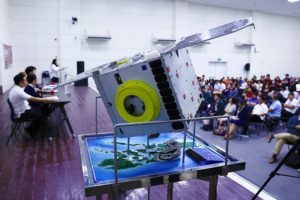
How
virtualization improves efficiency and performance of a Chinese bank
In June 1997, Fubon Bank
officially began operating in Pudong New Area, Shanghai, China. Since then, Fubon
Bank has operated on both sides of the Straits and has been actively promotes
economic and financial cooperation between the People’s Republic of China (PRC)
and the Republic of China (RoC).
Challenge
As the first ever commercial bank to be incorporated using joint
capital from both sides of the Straits, Fubon Bank strives to serve the whole
country from its base in Shanghai. It aims to use local services and to
continuously enhance its service quality and profitability.
The bank uses Citrix virtualization technology to optimize and
effectively consolidate its IT structure and has successfully streamlined its
virtual desktop infrastructure (VDI). With VDI deployed, Fubon Bank has
significantly reduced operating costs such as electricity, cooling,
maintenance, etc.
However, finding a solution that provides security capabilities for
both a growing VDI and virtual server environment, while retaining all the
benefits of virtualization, was not easy. The bank ran into unexpected issues
using the traditional approach to securing virtualized infrastructure, as the
non-optimized security solution led to excessive resource consumption,
dramatically decreased ROI and resulted in the virtualization program being put
on hold.
“We require an extremely high level of network security, and that
also applies to virtualization technology,” Mr Tang, who was the IT Department
Manager at Fubon Bank, recalled.
According to Mr Tang, the IT department had planned to install
traditional antivirus software on every virtual machine, but the trial
installation produced unacceptable results.
“CPU, memory and storage resources were quickly over utilized, and
left us lagging well behind the expected virtual machine density of 1:50. The
virtual desktops had to constantly retrieve updates and each virtualized
desktop had to perform all the scanning tasks independently,” he said.
“This led to end users complaining about VDI responsiveness and
forced us to look for a more effective solution that could deliver outstanding
multi-layered granular protection for our VDI environment, but preserve a high
level of platform performance,” he added.
Solution
After reviewing all the security offers on the market, Fubon Bank’s
IT team, together with the senior engineers at Citrix, chose Kaspersky
Security for Virtualization and its Light Agent technology.
“After stringent testing, Kaspersky Security for Virtualization has
proved to be an extremely effective IT security solution. It has excellent
control functions, security baseline monitoring and zero-day attack prevention,”
said Mr Tang.
Kaspersky Security for Virtualization Light Agent fully exploits the
hypervisor’s own core technologies – complementing and enhancing security in
Citrix XenDesktop VDI environments.
A Security Virtual Appliance (SVA) on each host scans all virtual
machines centrally, while a powerful but lightweight agent deployed on each VM
allows the activation of advanced security features, including application,
device and web controls, anti-malware protection for IM, mail and web, plus
advanced heuristics, to dramatically increase the overall level of security for
the VDI. The light agent also preserves the end-user experience and virtualization
platform performance at a very high level.
The unique Kaspersky Security for Virtualization cache technology
can also reduce the resource consumption of the Citrix platform during full
disc scans.
Moreover, the IT administrator can manage desktops, servers and
virtual machines from Kaspersky Lab’s single unified console.
According to Mr Tang, Fubon Bank have now performed deployment of
Kaspersky Security for Virtualization in its platform running on more than 1,200
virtual desktops.
“After officially going online, we found that the specialized
security solution for our virtualized machines resulted in efficient storage
consumption levels and has a very small resource footprint on our
virtualization hosts. This significantly enhances the use of virtual machines
and ensures security protection, allowing the cost advantage of virtualization
to be truly maximized,” he said.
All information in this case
study is provided by Kaspersky Lab.





















